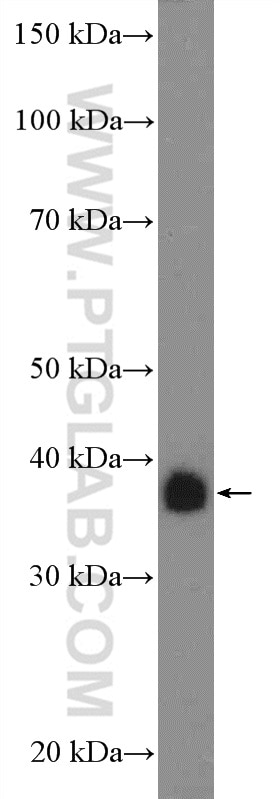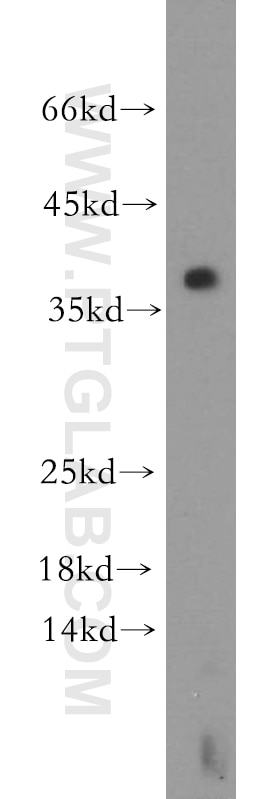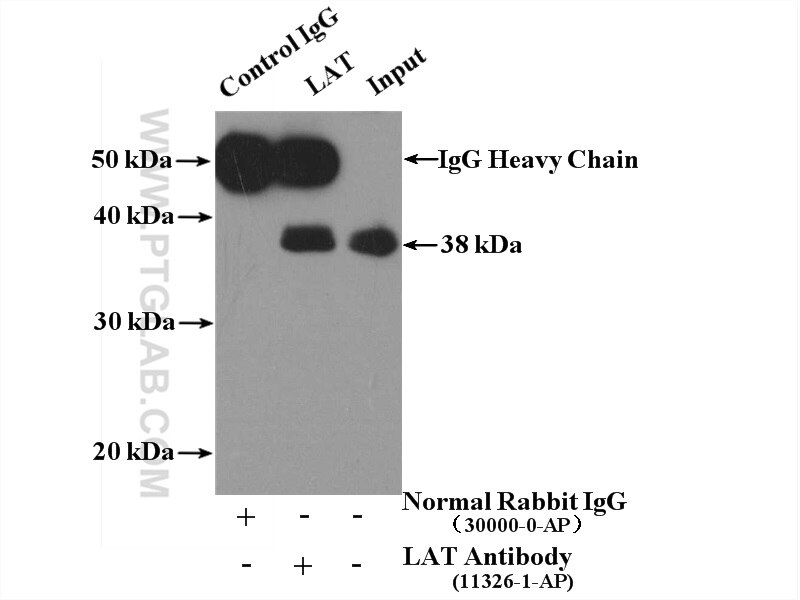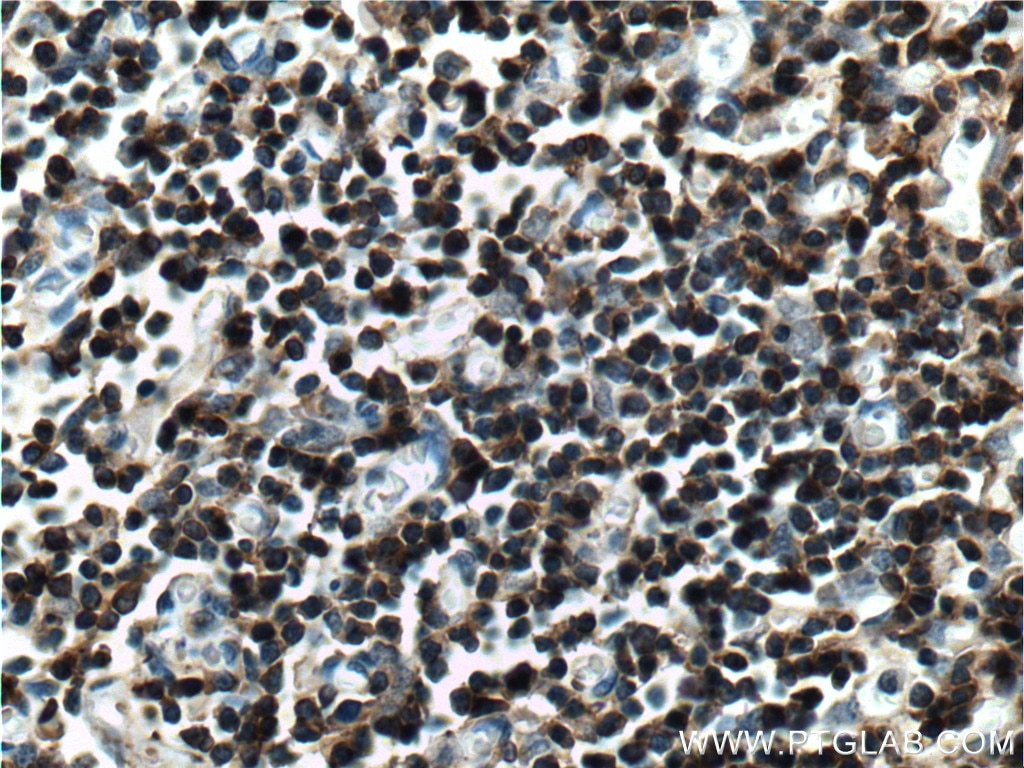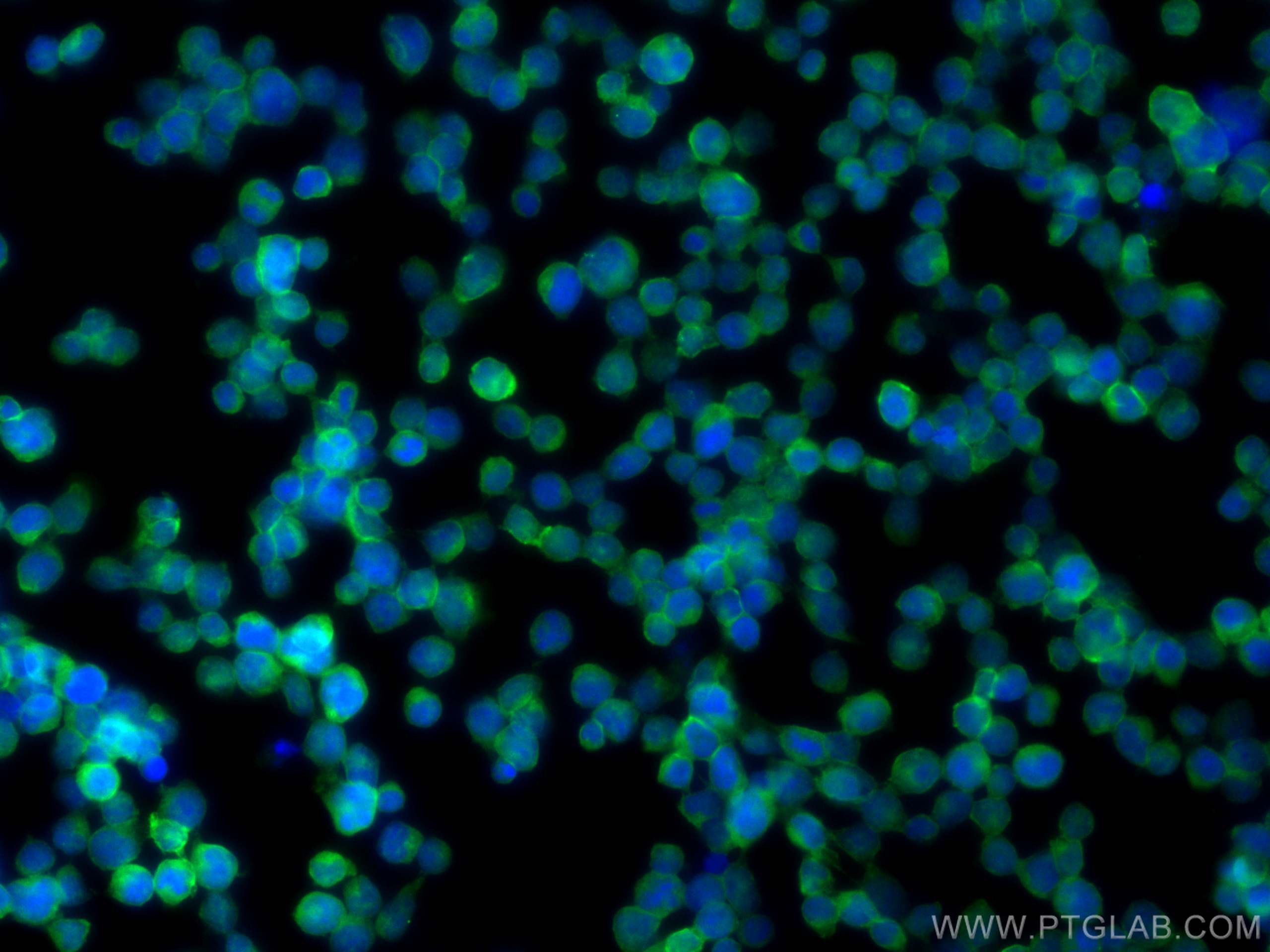Anticorps Polyclonal de lapin anti-LAT
LAT Polyclonal Antibody for WB, IP, IF, IHC, ELISA
Hôte / Isotype
Lapin / IgG
Réactivité testée
Humain, souris
Applications
WB, IHC, IF/ICC, IP, ELISA
Conjugaison
Non conjugué
N° de cat : 11326-1-AP
Synonymes
Galerie de données de validation
Applications testées
| Résultats positifs en WB | cellules Jurkat, mouse thymus |
| Résultats positifs en IP | cellules Jurkat |
| Résultats positifs en IHC | tissu de thymus humain il est suggéré de démasquer l'antigène avec un tampon de TE buffer pH 9.0; (*) À défaut, 'le démasquage de l'antigène peut être 'effectué avec un tampon citrate pH 6,0. |
| Résultats positifs en IF/ICC | cellules Jurkat, |
Dilution recommandée
| Application | Dilution |
|---|---|
| Western Blot (WB) | WB : 1:500-1:2000 |
| Immunoprécipitation (IP) | IP : 0.5-4.0 ug for 1.0-3.0 mg of total protein lysate |
| Immunohistochimie (IHC) | IHC : 1:50-1:500 |
| Immunofluorescence (IF)/ICC | IF/ICC : 1:200-1:800 |
| It is recommended that this reagent should be titrated in each testing system to obtain optimal results. | |
| Sample-dependent, check data in validation data gallery | |
Applications publiées
| WB | See 4 publications below |
| IHC | See 2 publications below |
Informations sur le produit
11326-1-AP cible LAT dans les applications de WB, IHC, IF/ICC, IP, ELISA et montre une réactivité avec des échantillons Humain, souris
| Réactivité | Humain, souris |
| Réactivité citée | Humain, souris |
| Hôte / Isotype | Lapin / IgG |
| Clonalité | Polyclonal |
| Type | Anticorps |
| Immunogène | LAT Protéine recombinante Ag1868 |
| Nom complet | linker for activation of T cells |
| Masse moléculaire calculée | 262 aa, 28 kDa |
| Poids moléculaire observé | 36-38 kDa |
| Numéro d’acquisition GenBank | BC011563 |
| Symbole du gène | LAT |
| Identification du gène (NCBI) | 27040 |
| Conjugaison | Non conjugué |
| Forme | Liquide |
| Méthode de purification | Purification par affinité contre l'antigène |
| Tampon de stockage | PBS avec azoture de sodium à 0,02 % et glycérol à 50 % pH 7,3 |
| Conditions de stockage | Stocker à -20°C. Stable pendant un an après l'expédition. L'aliquotage n'est pas nécessaire pour le stockage à -20oC Les 20ul contiennent 0,1% de BSA. |
Informations générales
LAT is a membrane-localized adaptor protein which is primarily concentrated in microdomains by palmitoylation. LAT plays a central role in T-cell activation by nucleating signaling complexes that are critical for the propagation of T-cell signals from the plasma membrane to the cellular interior. In addition to being a positive regulator of T cell signaling, LAT also recruits several negative regulatory proteins, including kinases, phosphatases, and ubiquitin ligases, which ultimately leads to signal termination. LAT is subject to ubiquitylation, and ubiquitin-resistant mutants of LAT display enhanced signaling.
Protocole
| Product Specific Protocols | |
|---|---|
| WB protocol for LAT antibody 11326-1-AP | Download protocol |
| IHC protocol for LAT antibody 11326-1-AP | Download protocol |
| IF protocol for LAT antibody 11326-1-AP | Download protocol |
| IP protocol for LAT antibody 11326-1-AP | Download protocol |
| Standard Protocols | |
|---|---|
| Click here to view our Standard Protocols |
Publications
| Species | Application | Title |
|---|---|---|
Sci Rep A ceRNA-associated risk model predicts the poor prognosis for head and neck squamous cell carcinoma patients. | ||
Hepatol Int Upregulation of CD147 protects hepatocellular carcinoma cell from apoptosis through glycolytic switch via HIF-1 and MCT-4 under hypoxia. | ||
Eur J Haematol Interferon gamma regulates a complex pro-survival signal network in chronic lymphocytic leukemia | ||
Nat Commun Cell volume controlled by LRRC8A-formed volume-regulated anion channels fine-tunes T cell activation and function |
